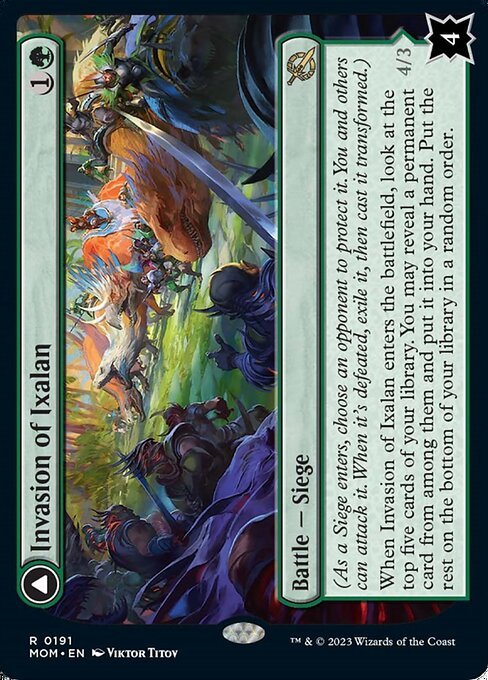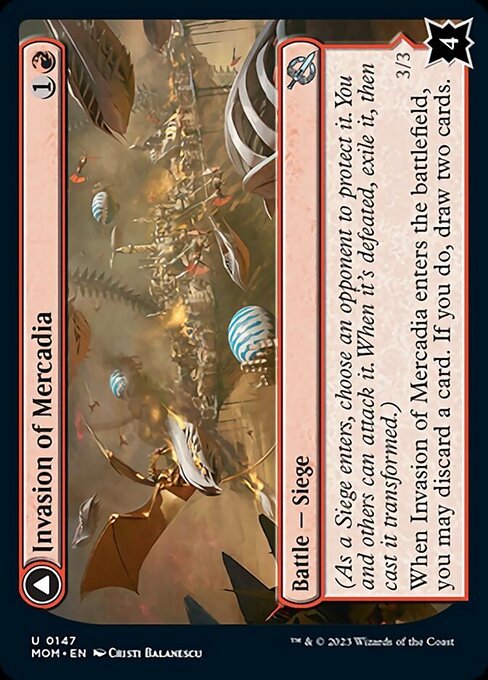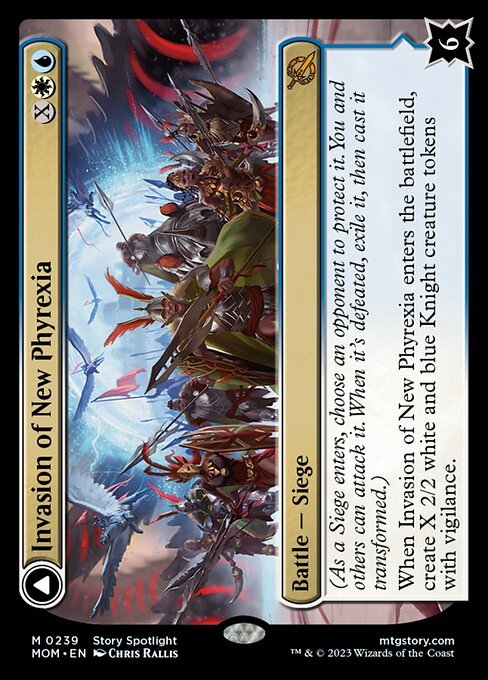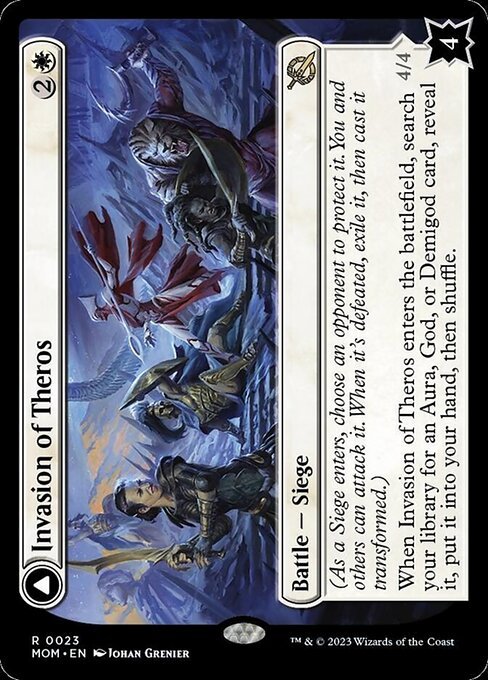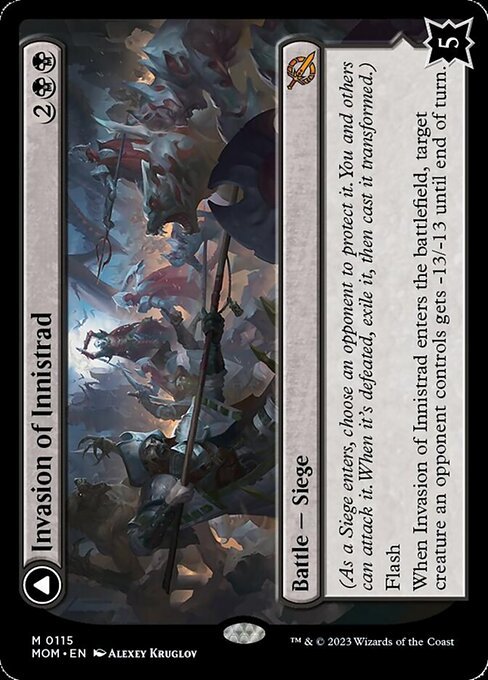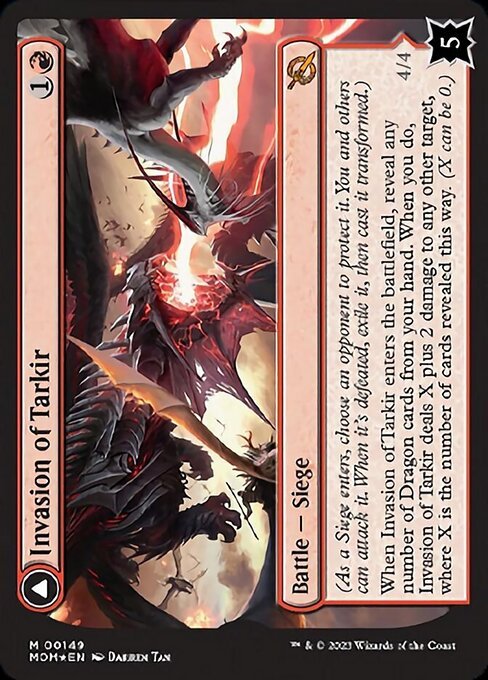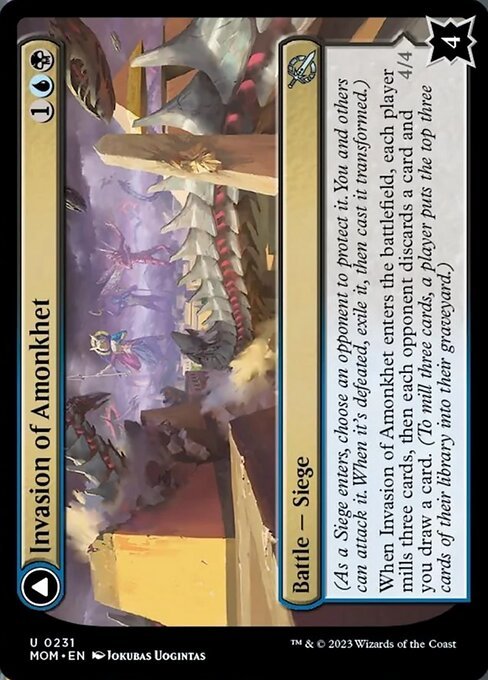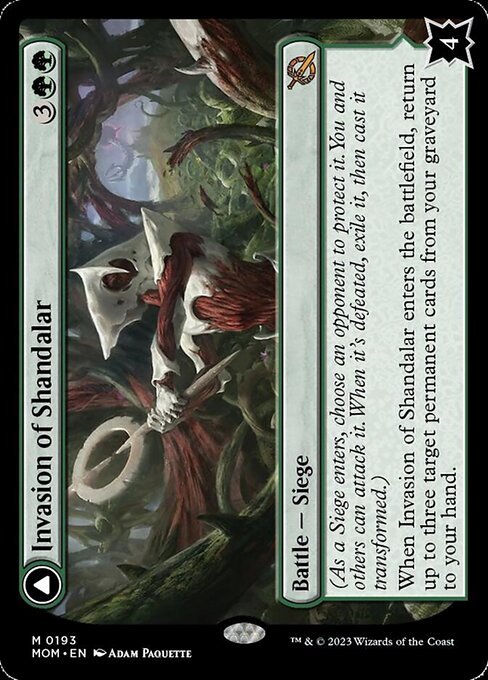March of the Machine Battle Cards Post-Release: Still Worth it?

It’s been a good long while since March of the Machine was officially released, and we are now just a week before its Aftermath. While the set did prove its relatively higher adoption rate in Standard (albeit still lower than the almighty Kamigawa Neon Dynasty), it also left us with another important experimental question:
Were battle cards ultimately worth it?
Constructed format impact-wise? Absolutely not. But from a performance and added interaction on the battlefield standpoint? Actually, yes. The flavor of siege-type battles may be quite wonky for many players. But for the genuinely usable ones out there, it proved that it is a workable concept. Battle cards were still able to change turn-by-turn decision-making to a noticeable degree, and showed the potential change in response dynamics of having a second type of permanent for the opponent to swing onto directly.
You may also like: Battle Cards/Mechanic Leaked, and Battle Cards Review: Worth a Flip or Just a Flop?
Great things about (siege-type) battle cards
Theoretically value-hefty via similar life gain effects
With the correct mana value and defense counters, transforming the card is always more strategically relevant regardless of the “additional life” your opponent gets with a siege-type battle. This is directly comparable to using life directly as a resource, as in giving life to your opponent like Swords to Plowshares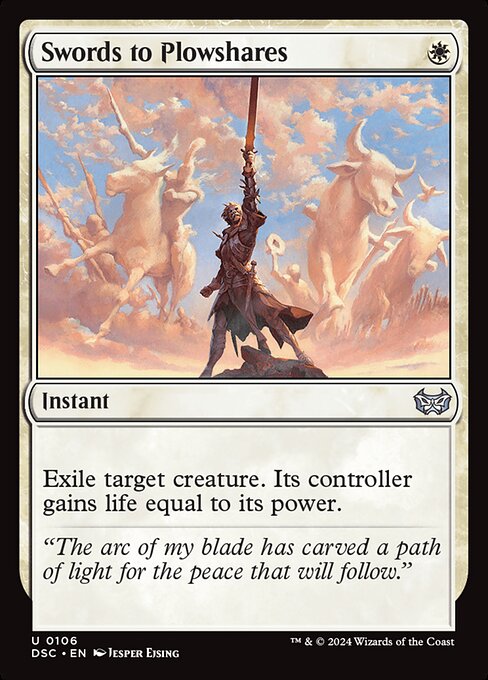 or Lay Down Arms
or Lay Down Arms . The basic logic is that if the flipped effects have the advantage of snowballing with your other plays, then swinging onto it will be a good move most of the time.
. The basic logic is that if the flipped effects have the advantage of snowballing with your other plays, then swinging onto it will be a good move most of the time.
The best example, of course, is the current highest-rated battle card: Invasion of Gobakhan // Lightshield Array . It has a low mana value of 2, can view your opponent’s hand, provides considerable tempo disruption effects, and can usually be transformed by using just one other investment. Most importantly, you are heavily incentivized to transform it immediately because you instantly benefit from its effects when it flips.
. It has a low mana value of 2, can view your opponent’s hand, provides considerable tempo disruption effects, and can usually be transformed by using just one other investment. Most importantly, you are heavily incentivized to transform it immediately because you instantly benefit from its effects when it flips.
No inherent disadvantages if your win-con is not lethal damage
If you are not aiming to add up combat damage till you burn out your opponent’s life, then surely diverting your attacks to a few defense counters for a specific type of board development isn’t going to be a bother. Of course, investing too many resources is still not recommended for transformation. Ideally, you should still only use one turn, one attack, one card, or a few insignificant tokens when you want a flip. But the point counts. You won’t ever need to “waste” your attacks to what should have been direct swings at your opponent.
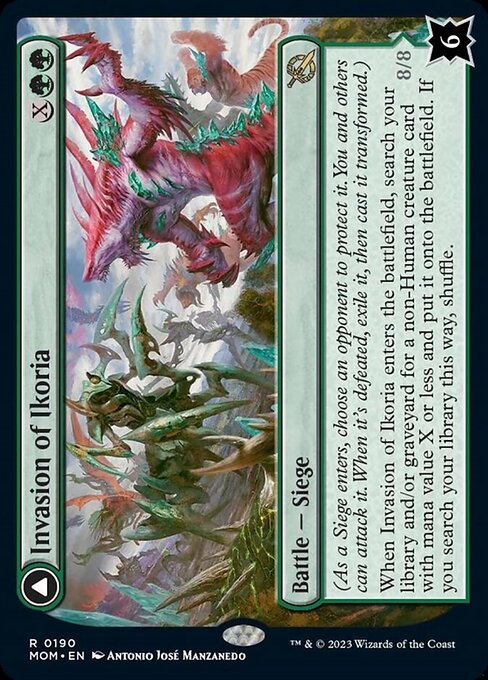

Works surprisingly well... so long as you have at least four mana.
Using an Invasion of Ikoria // Zilortha, Apex of Ikoria , for example, to a key piece like Venerated Rotpriest
, for example, to a key piece like Venerated Rotpriest , will allow you to effectively double the draw chances for the card without relying on a more roundabout method like Fauna Shaman
, will allow you to effectively double the draw chances for the card without relying on a more roundabout method like Fauna Shaman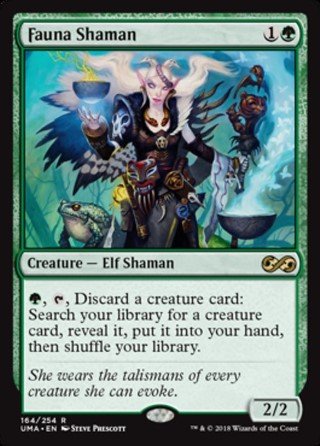 (cards like March of Burgeoning Life
(cards like March of Burgeoning Life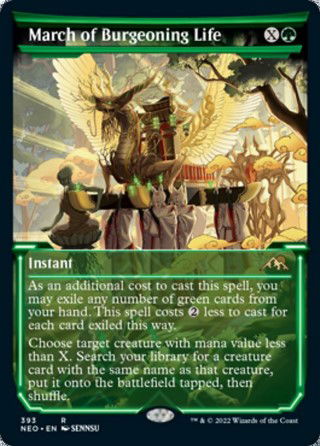 needs at least one copy already on hand/field). In fact, you don’t even have to touch your opponent’s life or the battle card’s defense counters for this particular combo!
needs at least one copy already on hand/field). In fact, you don’t even have to touch your opponent’s life or the battle card’s defense counters for this particular combo!
That does bring the question of whether the effect should have been given to a battle card in the first place. But that I suppose, is simply a matter of type flexibility. Toxic counter decks may never need Zilortha, but others might or could. As such, this inherent “modal option” will always be welcome whenever applicable.
Can (also) force your opponent to make irrational blocks
Similar to how we sometimes desperately defend crucially important planeswalkers, your opponent may also prematurely go on the defensive to prevent a battle card from giving you a massive advantage. This could then potentially disrupt their tempo, preventing a sudden comeback turn where they simply chose to absorb all damage because they can do so.
A well-built deck around Invasion of Segovia // Caetus, Sea Tyrant of Segovia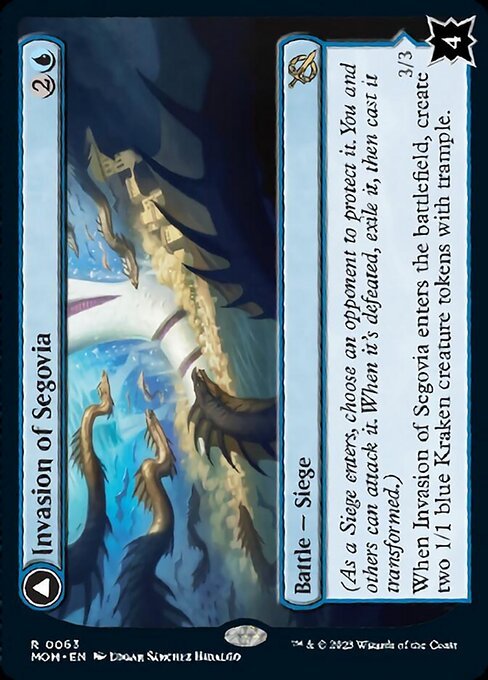 can simulate this kind of situation. Its transformed form can be tricky to stop once it cycles into even one turn. A couple of Protect the Negotiators
can simulate this kind of situation. Its transformed form can be tricky to stop once it cycles into even one turn. A couple of Protect the Negotiators and other low-cost control spells will effectively negate any countermeasure you have against it, even if you decide to focus on it for the remainder of the game.
and other low-cost control spells will effectively negate any countermeasure you have against it, even if you decide to focus on it for the remainder of the game.
What we wrongly assumed about battle cards
You are just making the opponent survive longer
While technically true, transforming battle cards is still essentially aimed at getting a better board or level of advantage against your opponent. Again, think of cards like Lay Down Arms . But instead of just having a single effect and directly giving life, you are rewarded an initial ETB, and then another (possibly more synergistic) ability upon dealing with the defense counters you gave to your opponent.
. But instead of just having a single effect and directly giving life, you are rewarded an initial ETB, and then another (possibly more synergistic) ability upon dealing with the defense counters you gave to your opponent.
Besides, there is never a strict requirement to flip the battle card once it lands. If the effect is sufficiently unique-ish enough, it can be added by default without considering transforming it, as in the case of Invasion of Regatha // Disciples of the Inferno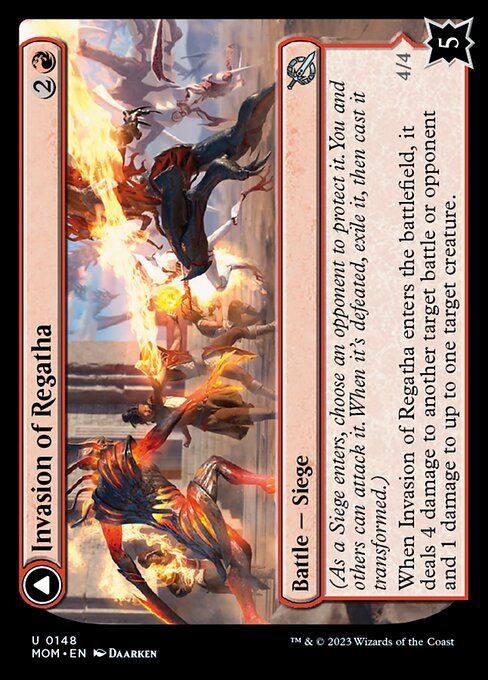 .
.
Good ETB is good enough
Because there are many more alternative spells with similar effects, battle cards are often placed at a significantly lower priority rate in deckbuilding. To make them obligatory add-ons, not only do they need to be good enough, but they also need to be slightly busted, in a way that convinces the deckbuilder to them use first before any other existing option.

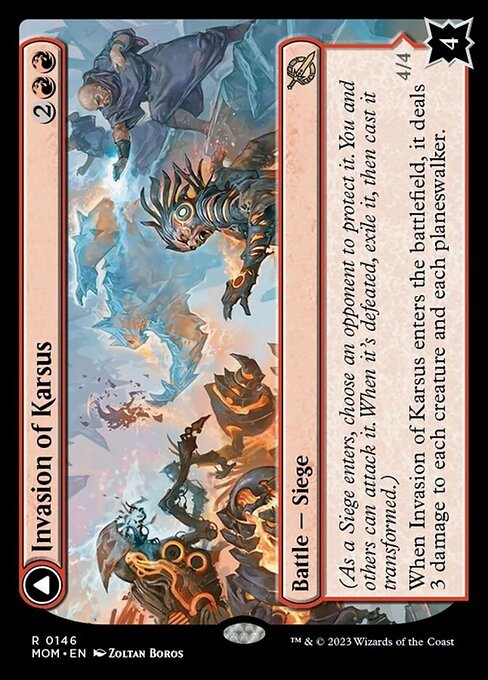
Not exactly enough of an alternative is it?
Invasion of Ergamon // Truga Cliffcharger , saw very frequent play as one of the most commonly used uncommon battle cards at the start of March of the Machine. After all, it does have a relatively good ETB effect for the mana it requires. However, opponents never really feel incentivized to do anything about it, even with its transformed form. Without cost-parity synergies for its looting effect, it usually ends up as a very weak version of Big Score
, saw very frequent play as one of the most commonly used uncommon battle cards at the start of March of the Machine. After all, it does have a relatively good ETB effect for the mana it requires. However, opponents never really feel incentivized to do anything about it, even with its transformed form. Without cost-parity synergies for its looting effect, it usually ends up as a very weak version of Big Score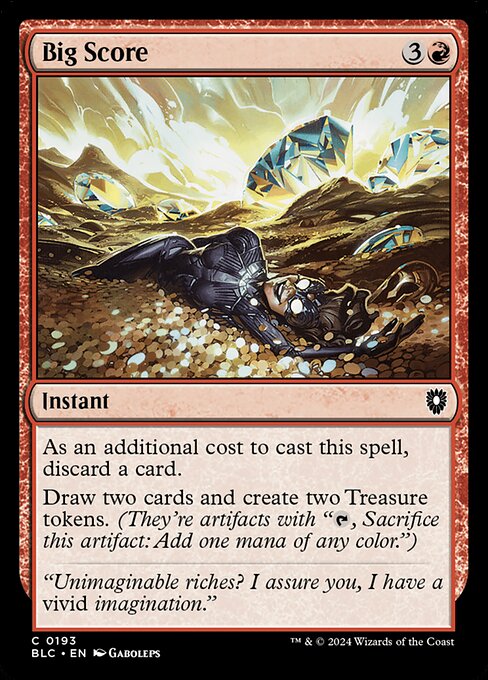 . Also, spending resources to remove its awkward five defense counters for a meager single-filter 3/4 will hardly do wonders to your mid-game.
. Also, spending resources to remove its awkward five defense counters for a meager single-filter 3/4 will hardly do wonders to your mid-game.
Invasion of New Capenna // Holy Frazzle-Cannon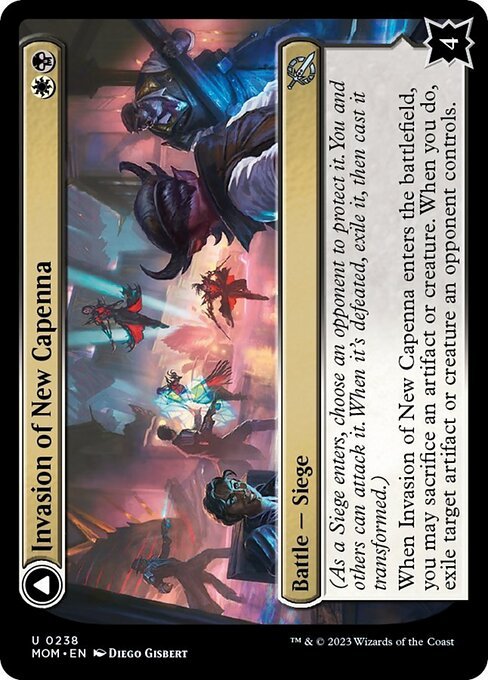 , on the other hand, provides a somewhat potent exiling removal effect for its uncommon rarity at all points of the game, backed up by a fairly unique enough effect for tribal builds (backside) that is easy enough to obtain at four defense counters.
, on the other hand, provides a somewhat potent exiling removal effect for its uncommon rarity at all points of the game, backed up by a fairly unique enough effect for tribal builds (backside) that is easy enough to obtain at four defense counters.
Any defense counter is okay so long as the transformed effect matches
Invasion of Alara // Awaken the Maelstrom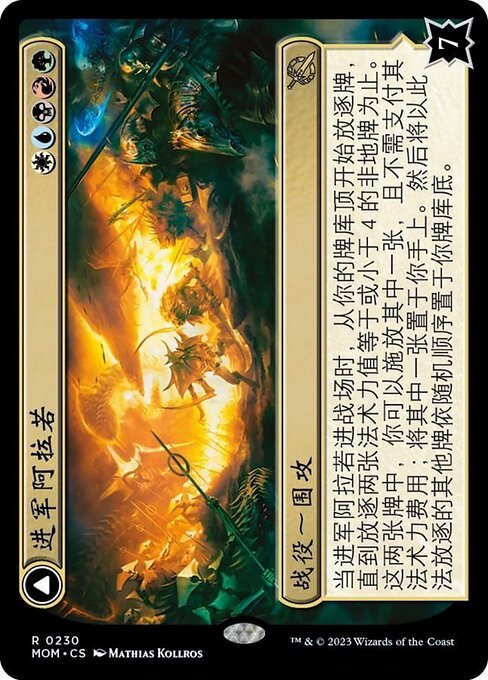 is a battle card with a very powerful effect once it transforms into a sorcery. Thus, it might seem that seven defense counters are worth the investment. But turns out, that is not the case.
is a battle card with a very powerful effect once it transforms into a sorcery. Thus, it might seem that seven defense counters are worth the investment. But turns out, that is not the case.
Suppose the battle card does not have any integrated way to crack itself. In that case, you will likely have to use more than three crucial sources (which is no longer efficient) just to get to that other side. Worse, any disruption by your opponent will generally set your transformation objective two steps backward. Depending on the battle card, the transformed side may not even be worth flipping anymore by the time you already have something to crack it reliably.
Elements of a good (siege-type) battle card
To summarize, battle cards are great and usable if they have at least three of the attributes listed below:
- Already paid its value upon ETB and a bit more - Pretty obvious and straightforward. The battle card should have an initial effect a bit worth more than its mana cost. At the very least, make it more appealing to potential alternatives that are already available.
- Preferably has three or four defense counters - At 3 or 4 defense counters, you can divide the damage cleanly to either 1+2, 1+3, or 2+2 for an “optimal maximum” of two sources of damage (instead of relying on 1’s). Plenty of efficient cards also deal a solid 3 or 4 points of combat or direct damage, making it a one-card transformation investment.
- The transformed form immediately does something - Upon transformation, the flipped side should already be instantly usable or its effect applicable. If it is a creature, make it an instant threat that would force opponents to divert their resources onto it.
- Preferably has a way to crack itself (if defense counters are five or higher) - Like planeswalkers being highly rated for having instantly usable defensive options (such as generating tokens), battle cards should also have a method of transforming on their own, especially if the defense counters exceed our 3-to-4 sweet spot.
March of the Machine battle cards that 'survived' Standard
Tier 1 Battle Cards
Found a new place in some meta decks.
Tier 2 Battle Cards
Add-ons if appropriate, but keep the priority level low.
Tier 3 Battle Cards
Other possible extra options, though quite less potent/consistent.
Special Battle Cards
Can be very good, but only for specific theme builds.
Underrated Battle Cards
Overrated Battle Cards
Conclusion – Proof of Concept Still Pending, but Promising
Contrary to its initial hype before we knew what they were, battle cards did not significantly impact any constructed format. Its practical gameplay was not as innovative as hoped, and more than half of the first set in March of the Machine were complete duds.
That being said, there is hope for some of the quirky dynamics battle cards have. After all, the best ones did find their way into competitive Standard decks as early as the first week. Even the lesser-rated ones still have effects that are good enough that you will see them somewhat consistently during your cozy, afternoon ranked BO1 games.
Besides, we technically are still within its testing phase. Mark Rosewater has already teased as early as the first WeeklyMTG stream for March of the Machine that newer battle cards with different mechanics will shortly follow.
As for the question of whether battle cards were flavorful enough... that is a topic for another time.
About ChrisCee:
A witness since the time the benevolent silver planeswalker first left Dominaria, ChrisCee has since went back and forth on a number of plane-shattering incidents to oversee the current state of the Multiverse.
"Target bird is no longer available. Please leave a message after the last bounce."


